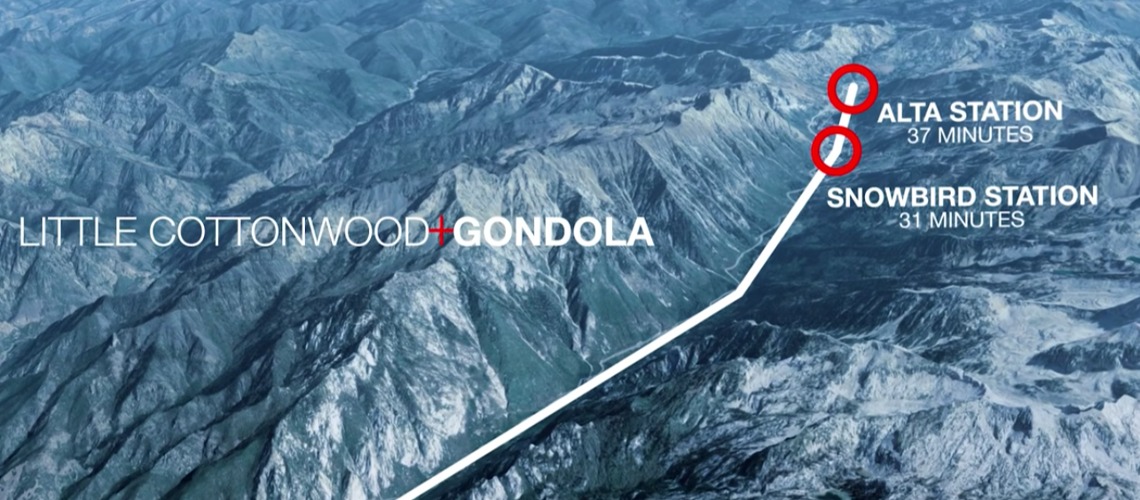Utah Department Of Transportation Approves Little Cottonwood Gondola

The Utah Department of Transportation (UDOT) released the Record of Decision (ROD) for the Little Cottonwood Canyon Environmental Impact Statement (EIS). The ROD is the final step in the EIS process and selects Gondola Alternative B, with phased implementation of Enhanced Bus Service Alternative components, to improve transportation in Little Cottonwood Canyon. The ROD can be reviewed on the project website https://littlecottonwoodeis.udot.utah.gov/
Gondola Alternative B, with phased implementation, overall best meets the project purpose and need and the short and long term transportation needs for the canyon. The gondola provides the highest travel reliability, as it can operate independently of S.R. 210, avoiding delays related to adverse weather, crashes, slide offs, and slow moving traffic. While the gondola does have high visual impacts, it has low impacts to the watershed, wildlife movement, and climbing boulders, along with low operations and maintenance costs. Full implementation of Gondola B depends on available funding.
“This decision will help improve transportation in Little Cottonwood Canyon now and into the future,” said Josh Van Jura, UDOT Trails and Group Director and Little Cottonwood EIS Project Manager.“It took more than five years of thorough research, analysis, engineering, public outreach, and the careful review of roughly 50,000 formal public comments, more than any previous environmental study in UDOT’s history, to come to this decision.”
Recognizing that safety, mobility and reliability are issues on S.R. 210 today, UDOT will implement the selected alternative in phases, starting with components of the Enhanced Bus Service Alternative. With the funding granted by SB2 (2023), Phase 1 planning and design is expected to begin this summer and includes coordinating with the USDA Forest Service and the Federal Highway Administration for the required permitting and easements, identifying a bus service provider, procuring buses and tolling equipment, and design for a mobility hub and resort bus stops at Snowbird and Alta.
- PHASE 1: When implemented, Phase 1 will include improved and increased bus service scaled to meet demand (with no canyon roadway widening), constructing resort bus stops and a mobility hub at the Gravel Pit, tolling, and winter roadside parking restrictions. Increased bus service, tolling and resort stops will be assessed further for Big Cottonwood Canyon in Phase 1. Phase 1 is anticipated to be operational in the fall of 2025.
- PHASE 2: Based on available funding, Phase 2 improvements will include widening and other improvements to Wasatch Boulevard, constructing snow sheds, and implementing trailhead parking improvements.
- PHASE 3: Implementation of Gondola Alternative B in Phase 3 is dependent on available funding. During this phase, UDOT will construct a base station with 2,500 parking spaces near the mouth of Little Cottonwood Canyon where all users would travel directly to the base station without needing to take a bus from a mobility hub. Each gondola cabin would hold up to 35 people, and travelers could expect a cabin to arrive every two minutes. Once the gondola is operational in Phase 3, bus service in Little Cottonwood Canyon would be discontinued.
“Transportation improvements in Little Cottonwood Canyon at all phases will improve air quality, protect the watershed, and increase the quality of life for residents and canyon users by reducing traffic congestion as private vehicles shift to transit,” Van Jura added. “The transit-based actions in Phases 1 and 3 demonstrate a commitment in shifting to multimodal transportation solutions for everyone.”














